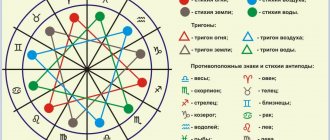Using macrame knots you can create real masterpieces. If you decide to master the macrame technique, then, first of all, you need to learn how to knit the main knots, which are the basis of all other patterns. Afterwards, you will be able to knit beautiful and stylish things from these elements. For beginning needlewomen, a lot of books and thematic magazines are published with detailed patterns for weaving a variety of products. However, without knowing the first and most important nodes, you will not be able to work on them. We invite you to familiarize yourself with master classes on knitting some knots.
Rep knot in macrame
The rep knot is similar in structure to the loop knot. In the macrame technique it is almost the most basic. It is almost always used in weaving jewelry and animals. A series of such elements looks like a voluminous lace and is called a brida. Brides can be horizontal or diagonal. In order to weave a horizontal brid, the main thread must be laid along the workers parallel to the warp. The diagonal bridle is woven on a rope located at an angle.
Using a tandem of vertical and horizontal bridges, you can create interesting geometric patterns.
Rep knots are divided into vertical and horizontal. In the first case, the first thread in the row is the working thread, in the second - the main one. Using a combination of horizontal and vertical knots, you can weave large beads into the product.
The rep knot in macrame is one of the most basic
Master class on knitting a horizontal rep knot:
- Secure several threads folded in half with needles on a special pillow;
- Pull the first lace on the left along the remaining threads (we will call them working threads);
- With the first working thread, make two turns around the main thread from bottom to top;
- Pass this working thread into the loop formed between turns;
- Tighten the knot;
- Take the next working thread and tie a new rep knot on the main one.
- We knit the entire row in this way.
Weaving a vertical rep knot differs only in that the main thread is the working thread, and the working threads are the main ones. Try knitting a series of vertical elements. Practice weaving horizontal and diagonal bridles. For the learning process, it is better to choose thick cotton threads as they do not slip and are easier to work with. Beginners should not tie knots with slippery silk threads.
Materials and tools
To work you will need tools:
- hard pillow for horizontal weaving.
Tip: If you don't have a pillow on hand, a piece of foam will do. For many, it is even more convenient to use.
- pins for fastening;
- crochet hooks (large sizes);
- scissors;
- tape for measuring (you can use a ruler, but it’s inconvenient to measure);
- clamps - special textile vices for fastening threads vertically;
- glue;
- hanging weights for aligning threads;
- decorations - buttons, rhinestones, beads (depending on the needlewoman’s idea).
Flat macrame knot
Using decorative flat knots you can make nets for a hanging chair, a cosmetic bag or a rug. They are most often used to weave furniture and other interior items. A simple flat knot plays a key role in weaving many elements, for example, a checkerboard is made from double such knots.
Flat knots are used for weaving nets for hammocks. You can also decorate a collage with such elements.
Flat knots can be left-sided or right-sided. If you weave a series of knots tied in one direction, you will get a twisted chain that is suitable for decorating necklaces, collages and curtains. By alternating a left-sided and a right-sided flat knot, square knots are obtained. Such knots, arranged in a checkerboard pattern, form an openwork weave.
A flat macrame knot is used for weaving nets
We weave a single flat knot:
- Attach two threads folded in half to the pillow;
- Mentally number them from left to right;
- Take the first thread on the left and put it over the second and third, and then thread it under the fourth.
- Now take the fourth thread and pass it under the second and third, and then thread it into the loop formed by the first thread.
- Pull the ends of the first and fourth strands at the same time, pulling the knot tight.
We have described to you the weaving of a left-sided flat knot; to weave it to the right side, you need to perform the same steps, counting the threads from the right side. A square (aka double flat) knot can be made by tying the first stitch knot to the left and the second to the right.
What does it mean?
The dual nature of knots in feng shui makes them very unusual talismans. They can mean rupture, alienation, or the release of various energies. Or carry the opposite information: formation, interweaving, inevitability in human destiny. Knots are mandatory items for magicians, sorcerers, warlocks and fortune tellers. When a knot is tied, it means the subordination of higher powers to people, and when they unravel it, it means the release of internal forces. Cutting a knot carries a notice of a sharp turn in life, unexpected difficulties, bold decisions or categorical changes. The Chinese knot, according to Eastern beliefs, can protect a person from the influence of evil forces, help in difficult life situations, bring money and prosperity to the house, protect the family from the evil eye and gossip.
How to weave a macrame tatting knot
Tatting, woven using the knotted technique of two threads, looks like an elegant decorative cord; it can be used to decorate the outline of any product. It is so simple that you don’t even need a sample picture to knit it.
The structure of the tatting knot is somewhat reminiscent of ordinary blizzard knots, but unlike them, it is secured with a loop.
A tatting chain can be woven from either two or four threads. In the first case, one thread is braided by the second, and in the second, the two outer threads alternately braid the group of central ones.
Macrame tatting knot is woven quite simply, but looks very elegant
Master class on weaving a tatting chain using two threads:
- Attach a doubled thread to the pillow;
- Make one turn with the left thread from the bottom up around the right one;
- Pass the end of the left thread into the loop formed;
- Tighten the knot;
- Weave a column of such knots.
To weave a four-strand tatting chain, you need to attach two folded threads to the pillow and, alternating the first and last thread, tie tatting knots on the center threads folded together.
What are they made of?
Making macrame: photos and patterns for weaving panels
For macrame, you can use threads of different thicknesses and twists. If you need to weave pendants and pendants, floss, nylon and cotton threads are suitable. You can actually weave a beautiful tie for a bottle or jar from a medium-thick rope.
Well, thick threads are used for panels, rugs, table runners, and all kinds of stands. Feathers and beads, various decorative inclusions, preferably of a natural nature, for example, wooden elements of various shapes, can be woven into the panel.
What panels are woven from:
- cords of different thicknesses;
- thick cotton threads;
- simple clothesline;
- nylon cords;
- leg-split;
- sisal of different colors;
- flat braid;
- fishing line of different thicknesses;
- jute fiber;
- vegetable fibers;
- knitting yarn.
The material should be quite durable, but at the same time flexible to weaving. It must fit the model and theme of execution
Naturally, both the quality of the material and the color match to the declared one are important. The threads need to be rigid and twisted, since without this it will not be possible to get a normal knot
Hard threads, by the way, can be softened.
Materials for work
Today it is difficult to answer who was the discoverer of the unusual weaving method, but the whole world is grateful to him. The uniqueness of knot weaving lies in its simplicity, beauty and budget. To weave beautiful interior hand made items and accessories, such as panels, owls and other amazing crafts, you will need very little. First you need to determine the base and choose the material for weaving.
Most often used for work:
- hemp or linen ropes;
- cotton cords and twine;
- sisal and any flat braid.
In ancient times, products using the macrame technique were made from leather cords, straw and even plant fibers. Modern materials will surprise even the most experienced craftswomen with their variety. For example, reinforced threads, colored floss, lurex, all kinds of cords and threads with a waxed texture will become the basis for an original and stylish decoration. Centuries-old practice shows that natural materials like flax or cotton are more pliable for knitting textured knotted patterns.
Threads and cords in macrame
It should be remembered that the threads for creating panels, handbags or bracelets using the macrame weaving technique must be as strong, pliable and moderately twisted as possible.
You should not choose threads with a “shaggy” texture for knot weaving. Increased “fluffiness” will hide the unique patterned relief of the product from us. Skillful combination of several types of applied arts, such as embroidery, knitting or crocheting, beading, will create a truly exclusive masterpiece.
Selecting tools
Before starting to study and select macrame patterns, beginners should acquire a “magic chest” that will contain all the necessary tools for creative work. One of the main advantages of such needlework is the minimum financial costs.
For weaving you will need the simplest sewing tools:
- safety pins to secure the threads;
- tailor's scissors with a sharp blade;
- sewing needles and threads;
- PVA glue to fasten individual elements of the pattern;
- simple crochet hook.
In addition to a simple sewing kit, you should prepare a work surface. This can be a small pillow that can be easily sewn with your own hands. The pillow can be replaced with a board, which is upholstered with foam rubber and then tightly covered with cloth. Such a simple device will prevent the threads from getting tangled and will provide the craftswoman with comfort during the weaving process.
After the pattern of macrame products has been selected, threads or rope are fixed to the surface, and the components are carefully laid out in the desired order.
Knitting technologies
Learning macrame begins with an introduction to technology - basic knot weaving patterns. There are four main nodes in macrame.
Fixative. Every job starts from this node. The working threads must be secured to the main thread.
Flat. This is the main macrame knot, the first one you learn to weave.
Rep. It can, like a flat one, be vertical and horizontal. A chain of such nodes is called a brid.
Square. This is an alternation of right-sided and left-sided flat knots.
First you need to work out all the basic elements according to the schemes, understand their specifics, and “get” your hand. Then you can start weaving a specific product. Naturally, this should be as simple a panel as possible.
Chinese macrame knots: diagrams
Chinese knots are not just decorative elements; each of them carries a hidden sacred meaning. They are distinguished by the complexity and elegance of their weave; for example, the well-known Josephine and Capuchin knots also have eastern roots. There are a huge number of types of Chinese knots. Today we will look at one of the simplest elements, which is called “Lotus”. Many people used it in childhood to weave baubles and laces.
Chinese Lotus Knot:
- Place two threads on the pillow, one on top of the other, and secure the place where they intersect with a tailor's pin;
- Now you have two top and two bottom threads.
- Number the threads in a circle, starting with the first thread from the left.
- Place the end of the first thread on the second thread;
- Place the end of the second thread on the third thread;
- Place the end of the third thread on the fourth thread;
- Pass the end of the fourth thread into the loop of the first thread;
- Pull each thread evenly in its direction until a neat knot is formed;
- Weave a lace from these knots.
There are many types of Chinese macrame knots known
A chain of such knots is called a snake knot. It has this name due to its resemblance to this reptile. You can make a beautiful heart keychain from a cord consisting of lotus knots.
Common options
In modern Chinese culture, there are several hundred patterns that have a certain meaning and are a symbol of a certain energy. A few of the most common nodes:
- Swastika, or the pattern of true love and virtue. Outwardly it resembles the symbol of the Buddhist sun and brings prosperity to the home of its owner.
- Good luck. Common Chinese weaving. Most of the patterns in the shops are simply called lucky knots due to their Chinese origin.
- Six petal flower. A symbol of complete well-being.
- Josephine, or money coin. A symbol for those who dream of becoming rich.
- Mystical. In translation, the name of this node means infinity. Those who find it difficult to cope with this pattern try its elongated variation.
Expert opinion
Melnik Dmitry
feng shui master
Before you start weaving your talisman, it is recommended to carefully study the technique so that the work brings pleasure and brings good luck.
Herculean macrame knots for beginners: weaving patterns
The Hercules Knot is named after the hero of the same name from the myths of ancient Greece. This element is not only decorative; previously it was used everywhere. Sailors used it to tie ropes, doctors treated fractures, and the Greeks tied parts of their clothes. Now it is used by needlewomen to create beautiful furniture, carpets and wall panels. However, sometimes it is used in everyday life, so the skill of weaving a Herculean knot can be useful to you at any time.
How to tie a Herculean knot:
- Attach two threads to the pillow at the ends;
- Place the first thread on the left horizontally so that its end hangs on the right side;
- Pass the second thread under the hanging end of the first;
- Then place the second thread on the horizontal part of the first;
- Pass the end of the second thread into the loop formed on the left side;
- Now take the right thread and pull it horizontally so that its end hangs on the left side;
- Pass the left thread under the hanging end of the right;
- Now place the left thread on the horizontal part of the right;
- Pass the end of the left thread into the loop formed on the right;
- Tighten the Herculean knot.
Hercules knot-macrame is woven from four threads
As you can see, the Hercules knot is very similar to a regular flat one, but it is woven from two rather than four threads. A row of such knots is also very similar to a row of flat knots.
Knots are the main element in the macrame technique. Without understanding how they are knitted and where they can be used, you will not be able to weave a single product. The variety of knots is so great that it can take many years to study them, but you do not have to study absolutely all the elements of macrame before starting the product.
Most crafts are woven exclusively from basic knots, and detailed master classes will eventually reveal to you the secret of weaving complex elements. With practice you will gain all the experience you need.
Beginning of work. Fastening threads
You have decided to knit a product using the macrame technique. We decided on the choice of model, selected the product design and material. Next you need to cut the threads. But they do not all perform the same role.
The warp is the axial threads along which they are woven. Fewer of them are needed and they should be much shorter. And there are working threads that are used to weave knots. Naturally, when weaving, working threads are consumed faster and therefore much more of them are needed.
After cutting the thread, you need to attach it to the bar. More often it is an uneven fastening, where the axial threads are shorter than the working ones.
Remember that it is easier to start learning with thick and not very slippery threads, because weaving with them is much easier. Each node is clearly visible. And when you master the basic knots and weaving techniques according to patterns, you can move on to thin threads.
First way. Fold the thread in half, make a loop and lower it away from you. We pull the loose ends into a loop and tighten it. We have a lock on top, and the ends of the threads behind the loop. It should look like in the photo:
Second way. We make a loop again, bring it from behind to the bar, bend it towards ourselves and pull the ends of the thread into the loop. Lock on the bottom. Pay attention to the photo:
The third method is not much more difficult, but more interesting. First, we secure the threads by bending them towards themselves. Then we pass the right end of the thread through the bar from top to bottom and tighten the loop. Repeat the same with the left end. If you do everything right, it will turn out like in the photo:
In the lessons of Selena's Workshop you will clearly see the process of attaching threads and weaving basic knots:
Examples of macrame knots (photo)
DIY shamballa bracelet
Weaving is a labor-intensive but fascinating process. Beginners are not recommended to immediately take on large-scale projects after honing their skills on miniatures.
The Shambhala bracelet is one of the most popular jewelry worn by people of almost all ages.
A handmade Shambhala bracelet is not only a stylish decoration, but also a good luck charm. To work you will need beads, Tibetan, waxed or leather cord, and second glue.
Weaving algorithm:
- We cut two sections from the skein of thread, 40 and 80 centimeters long. The length of the working thread depends on the circumference of the wrist. The short section will become the warp, and the longer one will become the working thread. Let's tie them together with a simple knot.
- Let's start weaving. Draw the right end under the base, and then over the left end.
- We take the left end of the working part, lead it over the working part and under the right end. We “dive” straight into the loop and begin to tighten it. We repeat the maneuver, but now start from the left. In order not to get confused, you can repeat the mantra “on the right under-above-dive, on the left under-above-dive.” By speaking the algorithm out loud, it is easier to bring weaving to automaticity.
- After tying several knots, we string a bead onto the working part. We repeat this until the end of weaving.
- To prevent the ends of the thread from fraying, you can carefully singe them or coat them with clear nail polish.
To make a convenient lock, you can use a metal carabiner. But a true Shambhala bracelet is woven only with a thread clasp. To do this, tie another 40-centimeter piece of cord to the end of the working thread with a simple knot. We weave according to the algorithm. Do not tighten too much so that the bracelet opens and closes easily.
Shambola bracelet
The world of macrame weaving has many faces; it can take on any shape and form. It all depends on the skill, imagination and desire of the craftswoman. Once you try it, it is impossible to stop; the process of tying knots relaxes, calms and helps to put your thoughts in order.










